The Essence of Story work
This post is the last in a series about Creating your Leadership Story—how you can learn to see your original systemic story; how, particularly in high stakes situations, it inserts itself into your present day leadership behavior; and how, if desired, you can change your story. The fundamental premise is that you as a leader can learn to see your story—how you have learned to operate in systems–identify ways that it inhibits and ways that it helps you reach your goals, and create a new leadership story that is more aligned with the kind of leader you want to be.
In some ways story work is very complex. It involves learning to see patterns that have reverberated throughout your life and learning to understand the essence of how you have interpreted your experience of the human condition. In other ways it is very simple—there is an identifiable, straightforward set of steps you can engage in to discover and change your story. I call these steps “the essence of story work.” Here they are:
1. Identify and Clarify an important present EVENT: Identify a present situation with which you are having difficulty. A good place to start is with the question: “What is the most challenging leadership situation I am dealing with right now?” Clarify what is happening and how you are responding to it—your behaviors, your thoughts, and your feelings. You might say something like (this is a real example), “My biggest challenge is dealing with all the diverse constituencies in my organization and surrounding community. I try to keep them all happy so that I can hold the system together. That is my job as leader.”
2. Identify the PATTERN: Ask yourself “Is this the first time I have had this kind of experience and responded this way, or have I behaved in this way before?” Invariably, if the event is truly a significant, challenging, high stakes one for you, you will find yourself saying something like, “Oh I’ve been in situations like this several times before,” or, ”I’ve always done this,” (as the leader above said) or, “I have responded this way since my first job—no I did it in college too…well, now that I think about it, I also had this kind of experience in high school and Jr. High.” Now you have identified a pattern of behavior, and accompanying assumptions and feelings, that you have repeated many times throughout your life. The chances are very high that the pattern you see and your deep systemic story are mirrors of one another (mirrors not in content but in structure—the plot line, the character structure, your implicit assumptions, and what you tend to do).
3. Explore your Story (the STRUCTURE): Ask yourself, “What role did this pattern play in my original systemic story?” Or, “How did this story line play out in the first system of which I was a part?” Think through examples that occurred as you were growing up. Identify the major players and their roles, including the role you played. Identify the “story you told yourself” about what was happening—your thoughts, assumptions, actions, and feelings. By this time in your reflection process, who will have a very good picture of the difficulty part of your systemic story–the part which, when activated in present day situations, holds you back. At this level, the leader above said, “I was the youngest child. I had several brothers and sisters who had already moved away. I felt it was my job to hold the family together so they would come back. I did that by keeping everyone happy. Oh! That’s the same way I’m trying to lead in difficult situations today!”
4. Explore alternatives: When you see your patterns and your story, you can identify clearly the behavior you have engaged in and the assumptions you have been making. For example, one of the assumptions of our leader above was, “It is my job to hold the system together.” Another one was, “the way to keep people together is to keep them happy, to please them.” Usually we make these kinds of assumptions without even realizing we are doing so; they are implicit. Through story work, our implicit assumptions become explicit and, therefore, more easily changed. Ask yourself, “do these behaviors, thoughts and feelings I learned early on really fit my present day situation?” Usually the answer is no. Usually you see that there are other behaviors, assumptions, and feelings that will serve you better in your current circumstances. For example, our leader above may adopt a behavior of putting issues squarely on the table and an underlying assumption that working through tough issues is good for an organization.
5. Choose your new story: At this point, you have a good picture of your systemic story, how it has contributed to patterns of behavior over time, and how it plays out in present day high stakes situations. Let’s say your difficulty story is something like: “I never say no to new opportunities and challenges because I don’t want to be seen as inadequate. As a result, I get incredibly overloaded and stressed.” The story you choose is, “I say yes when I truly want to, I say no when that is called for, and I negotiate when I think appropriate. My life is in balance.” Then identify behaviors and assumptions that will support your new story, for example, sometimes saying no to authority and assuming that people will respect you rather than think less of you for standing up for yourself.
6. Practice, Practice, Practice: To bring your new story into being, identify specific behavioral experiments in which you will try out your new behaviors and assumptions. For example, “In our upcoming budget meeting, I am going to state my position very clearly and not cave in when people question me.” You might begin your experiments in situations that are lower risk and later try them in situations that are higher risk. For example, holding your own in the budget meeting may be less risky for you than opposing your boss in a 1/1 stand off. Try your experiments and notice what comes up—what you think, what you feel, what you say to yourself. Chances are you will feel some satisfaction at having tried something new and some anxiety in having tried something unfamiliar. Though we wish that it did, seeing the old story is, in and of itself, not enough to make it “go away.” The old story is apt to raise its head in the form of feelings of anxiety or sadness, thoughts like, “Oh my, what am I doing. They are going to think I’m not a team player!” Pay attention to what comes up, and notice the thoughts and feelings from the old story. Notice them but don’t get tangled up in them. Metaphorically step back from them, see them, and recognize that they can be part of the normal mix of things but that they don’t have to be in the driver’s seat. When you choose and practice a new story, your choice is in the driver’s seat. Just because you feel those old things and think those old thoughts doesn’t mean that you have to follow them. Rather, you can over time, notice them, learn from them, and continue to make choices in favor of what you want to create.
Using the media of stories, we have looked in some depth over the last several weeks at one aspect of human systems—the internal system—the things we think and feel that influence what happens. In coming posts we will look at a model for the Whole System, and then at the two remaining arenas in human systems—the face to face system, i.e. the world of direct interaction with others, and the larger external system—our organizations, businesses, and their environment. All of these arenas are parts of the greater systemic whole in which we live our lives.
Until then, good journey…
———————–
If you would like to learn more about story work and/or consider story coaching, feel free to call or email me at:
Steven P. Ober EdD
President: Chrysalis Executive Coaching & Consulting
Partner: Systems Perspectives, LLC
Office: PO Box 278, Oakham, MA 01068
Home: 278 Crocker Nye Rd., Oakham, MA 01068
O: 508.882.1025 M: 978.590.4219
Email: [email protected]
www.ChrysalisCoaching.org










